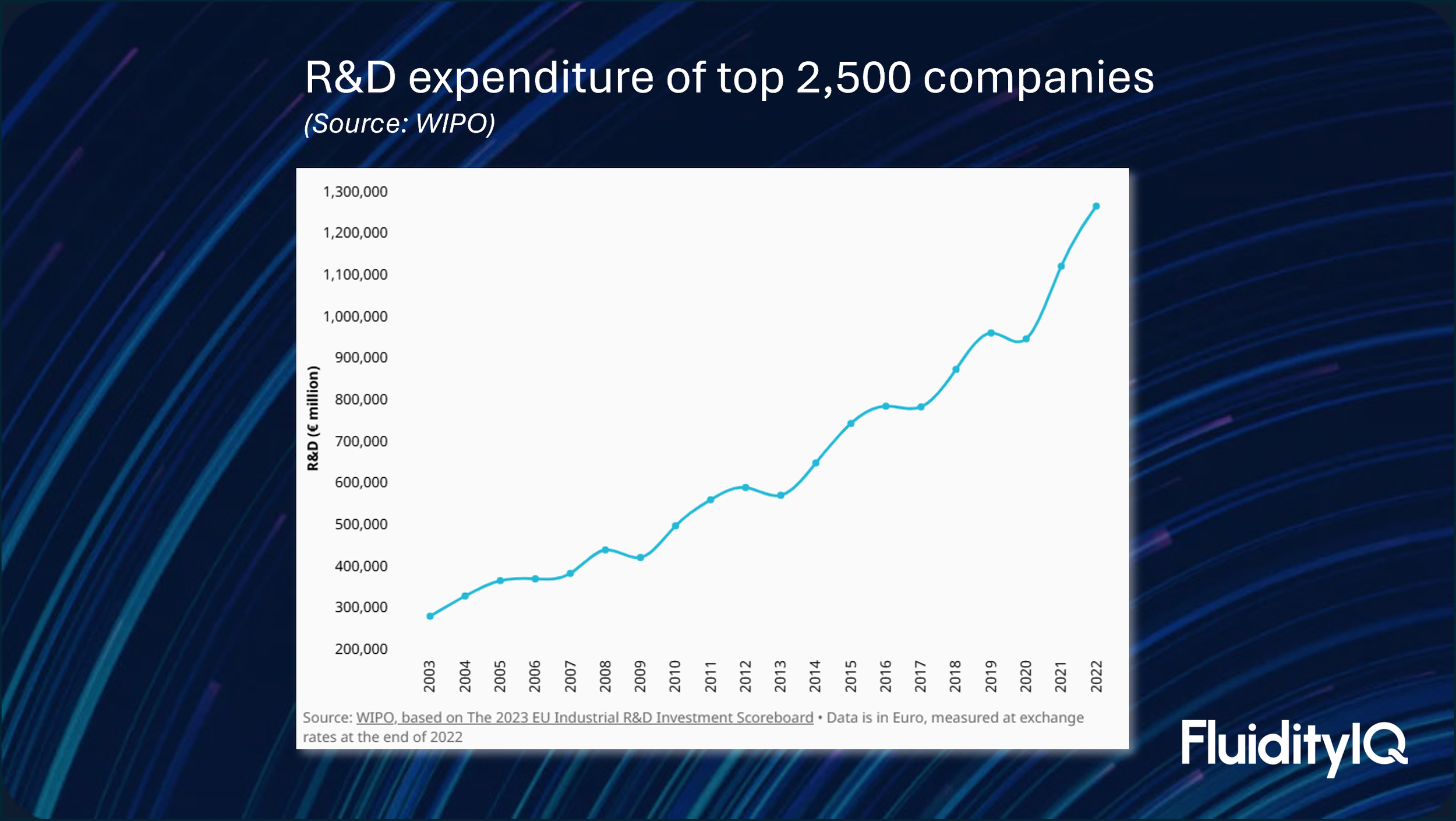Why FluidityIQ is transforming innovation insight for IP professionals
The changing landscape of R&D and patenting.
In today’s innovation-driven world, global R&D spending has skyrocketed—tripling since 2000. Patent filings have followed suit, yet the share of R&D budgets devoted to patenting activities (like drafting, filing, and prosecution) has actually been cut in half. What’s behind this paradox, and how can IP professionals adapt?
Let’s look at the numbers:
In 2000: Global R&D spending was $1 trillion, with 1.2 million patent filings. About 2–3% of R&D budgets went to patenting.
By 2010: Spending rose to $1.5 trillion and filings to 2 million, but patenting’s share dropped to 2%.
In 2023: R&D spending hit $3 trillion, filings reached 3.5 million, and patenting’s share fell further to just 1.3–1.7%.
This shift reflects how innovative companies are responding to budget constraints and the need to do more with less. Instead of chasing quantity, they’re focusing on fewer, higher-quality patents and bringing more work in-house. Research shows only a fraction of R&D output ever enters the patent workstream. IP professionals need tools that can increase their visibility so that they can adapt to the changing landscape.
The changing role of IP professionals.
Budget pressures and new tools—especially AI—are changing how companies manage innovation. IP law firms must evolve, moving beyond transactional work to become strategic partners in their clients’ innovation streams.
If you’re an IP attorney and your only view into a client’s innovation is through a single patent application or search project, you’re missing the bigger picture because that work likely represents less than 2% of their total activities. The rise of AI tools for drafting and researching patents means less money for traditional billable activities. To stay relevant, IP professionals must:
Help clients evaluate more of their R&D pipeline to broaden IP strategies.
Independently identify trends in their clients’ innovation spaces to help manage risk and uncover opportunities.
Focus on outcome-oriented analysis and advisory work, not just transactional deliverables.
FluidityIQ: More than a patent search platform.
This is where FluidityIQ stands out. Unlike traditional patent search platforms, FluidityIQ provides deep understanding and context for innovation spaces. Yes, it supports transactional use cases like FTO (Freedom to Operate) and patentability, but its real strength lies in delivering meaningful, contextually relevant insights and deep research agents to expose more opportunities faster and at lower cost.
FluidityIQ empowers IP professionals to:
See beyond individual patents and understand the full scope of client innovation.
Use advanced tools to analyze and interpret R&D streams.
Become consultative advisors who help shape IP strategy.
Conclusion.
As R&D spending grows and patenting budgets shrink, the need for smarter, more strategic IP management is clear. FluidityIQ is poised to help IP professionals meet this challenge—providing the insights and context needed to thrive in the new era of innovation.
To learn more about how cost effective FluidityIQ is click here. To request a demo, please visit www.fluidityiq.com or click here.

